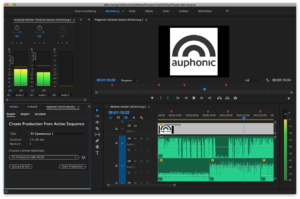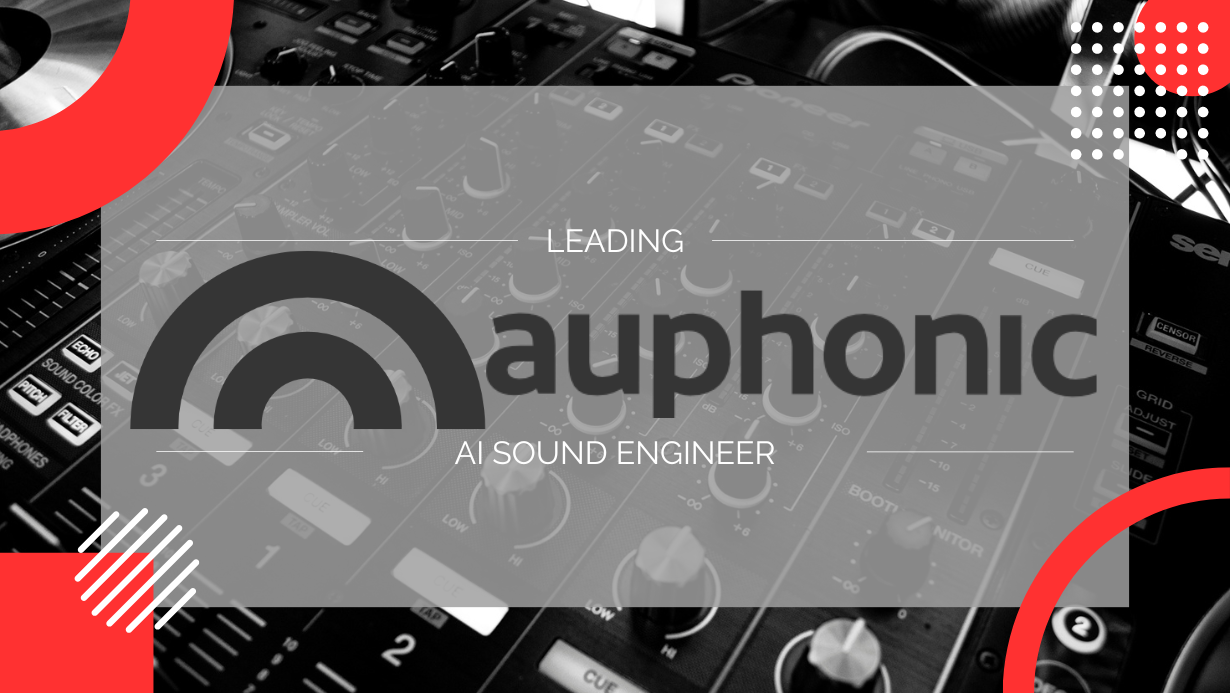Verdict: Auphonic is a great choice for those who don't have a background in audio mastering but need quality audio output. It is affordable and strai
Verdict: Auphonic is a great choice for those who don’t have a background in audio mastering but need quality audio output. It is affordable and straightforward to use and a great way to save time and money. However, if you have a very low-quality or complex track, you may be unable to make the necessary adjustments. Overall, Auphonic is a great tool, and I highly recommend it for anyone looking to quickly and easily master their audio.
| Automatically corrects audio level differences within one file | Difficulty dealing with complex audio tracks |
| Normalizes overall audio loudness | Difficulty dealing with bad audio files |
| Eliminates unwanted low frequencies | No dedicated desktop application |
| Removes hums and other unwanted noise | Freemium pricing model with limited features available for free. |
| Uses advanced algorithms for totally automated processing | No guarantee of quality output. |
| Affordable. |
If you want to maintain a professional and polished look, audio editing is essential. Poor sound quality is not something your listeners will put up with. Post-production work can take up a lot of your time, but services such as Auphonic can help. Auphonic is a paid web-based service used by podcasters, broadcasters, filmmakers, and radio show hosts. Read this review to find out if Auphonic is the exemplary post-production service for you.
What Is Auphonic?
Auphonic is a powerful piece of software designed to streamline the post-production process of podcast creation. Its automated tools make it easy to clean up background noise, adjust track levels, and restore volume. In addition, Auphonic offers two free hours of use each month, making it an ideal choice for those without access to top-notch recording equipment or the time to edit manually.

Auphonic is a must-have for anyone looking to produce high-quality audio content. Its signal processing and machine learning capabilities can level your audio, make it the proper volume for podcasting, add ID3 tags, and export to YouTube. All of this can be done with minimal effort and with the assurance that the audio will sound professional and polished.
To take advantage of this service, you can either register on their website or download their app, which is available for Android and iOS. Auphonic allows you to enhance your podcast’s audio while providing integration with Dropbox, Libsyn, and other services. It also allows you to add an intro and outro and blend it seamlessly into your podcast’s beginning and end. The file is then saved in the chosen format.
Main Features Of The Software
 Adaptive Leveler
Adaptive Leveler
Adaptive Leveler app adjusts the overall loudness of a file by evening out any disparities in volume between different elements such as speakers, music, and dialogue. This ensures that the entire episode has a steady sound level and that each track and segment is properly balanced.
It is ideal for applications that involve significant amounts of audio dialogue, such as podcasts, radio broadcasts, lectures, conference recordings, films and videos, and screencasts.
 Loudness Normalization
Loudness Normalization
Loudness Normalization is used to adjust the overall loudness of audio files to have a similar average loudness. The Adaptive Leveler ensures that the volume of the episode is consistent, while Loudness Normalization determines how loud or soft it is. We suggest -19 LUFS for mono audio files and -16 LUFS for stereo audio files, as stereo audio is perceived differently than mono audio.
 Filtering
Filtering
The Filtering algorithm utilizes a high pass filter to identify the minimum desired sound signal (such as male/female speech or bass in music) and selectively remove unnecessary or disruptive low frequencies from each audio segment.
AutoEQ makes the equalization of multi-speaker audio easy and efficient. Creating separate, time-dependent EQ profiles for each speaker ensures a consistent and pleasing sound output. Regardless of any variability in the voices during the recording.
 Noise and Hum Reduction
Noise and Hum Reduction
Use Auphonic’s Noise and Hum Reduction algorithm to detect and reduce ambient noise and hum in audio recordings. The algorithm classifies different types of background noise and automatically applies the desired level of reduction, with the default setting being “auto.” However, it is best only to use this feature if there is a clearly audible noise or hum that needs to be addressed. Otherwise, it is advised to leave this option unchecked.
 Basic And Extended Metadata
Basic And Extended Metadata
This information is primarily designed for music productions and is intended to be saved directly to the audio file. This includes the title, artist, and cover image. For podcasts, however, the hosting platform typically handles the metadata, so there is no need to complete this section.
 Chapter Marks
Chapter Marks
Auphonic’s Chapter marks feature enables quick navigation within audio files and is available on Soundcloud, YouTube, and Spreaker. This feature allows podcasters to add chapter markers to their episodes, enabling quick navigation within audio files and making it easier for listeners to jump to specific parts of their show. This feature is available when you export the episode to Soundcloud, YouTube and Spreaker. Or imported from text files or audio editors (DAWs).
 Speech Recognition
Speech Recognition
Auphonic’s Speech Recognition feature provides an accurate transcript of audio recordings with minimal crosstalk or spill. This is achieved by processing all tracks individually, ensuring the recognition service only deals with one speaker at a time. By pairing this feature with existing transcription services such as Google Speech, Wit.ai, Amazon Transcribe, and Speechmatics, users can create transcripts in multiple languages.
What Are The Limitations?
 Not entirely free
Not entirely free
Auphonic is often referred to as a freemium service, as you can use it for free if you process up to two hours of audio each month. However, if you need more processing time, you may need to purchase credits, either as recurring monthly or one-time credits, which can be used after you have used up your free or recurring credit.
Although the cost isn’t exorbitant, Auphonic may not be the most cost-effective option for serious podcasters who need to process lengthy audio files.
Not guaranteed perfect audio quality
Auphonic cannot guarantee perfect audio quality, as it is an automated software that only requires a single click. The algorithm will run its course, and the result may still contain audible background noise that was not picked up by the algorithm. If you require great attention to detail and perfect sound quality, Auphonic may not be the best choice for your post-production needs.
Difficulties with complex audio tracks and bad audio files
Poor quality audio files can present a challenge for Auphonic, as it may be unable to effectively process audio files with a low resolution or that have been compressed. Additionally, complex audio tracks with various sounds, such as someone speaking over a background music track, can be difficult to process
No dedicated desktop app
Each time you need to use the software, you must visit Auphonic website. This could be viewed either positively or negatively, depending on one’s perspective.
How Much Is Auphonic?
Auphonic offers a free plan allowing users to process 2 hours of audio per month. For those who need additional processing time, subscription plans known as “Recurring Credits” or “One-Time Credits” are available for purchase.
Monthly Recurring Subscription Credits – Billed Monthly |
Single Purchase Credits – Billed Per Use |
|
|

Consumers can access purchased credits until they are completely consumed. This means that credits purchased in January will still be available in December, unless they have been completely utilized.
If you anticipate a high volume of audio processing each month, Recurring Credits will provide a more cost-effective rate per hour of use, even if you don’t consume your allotted time.


COMMENTS